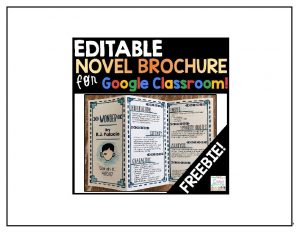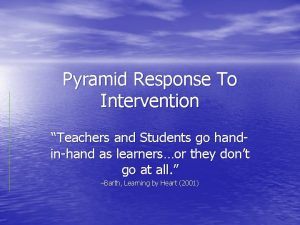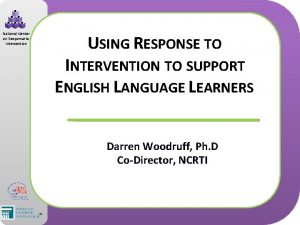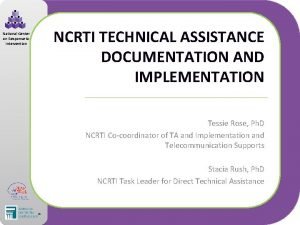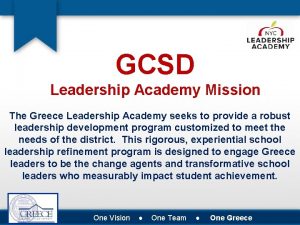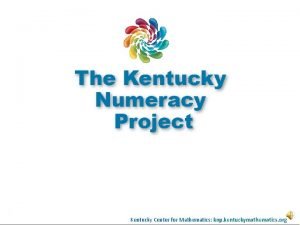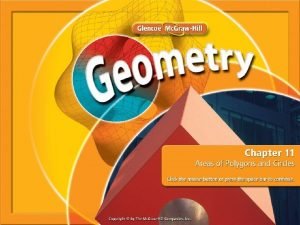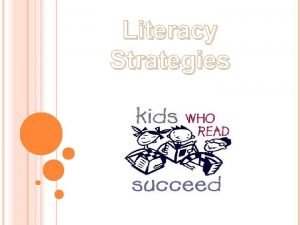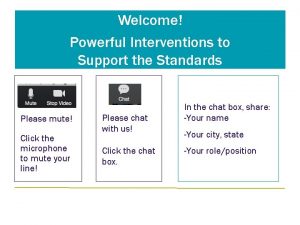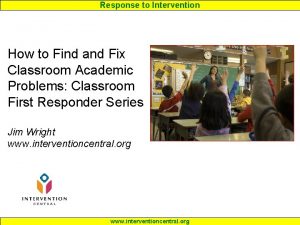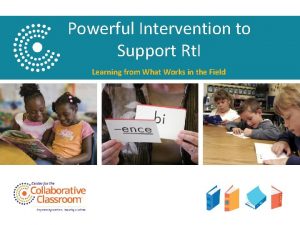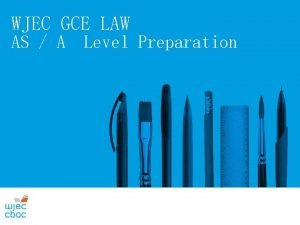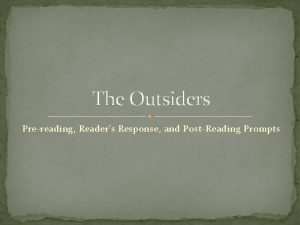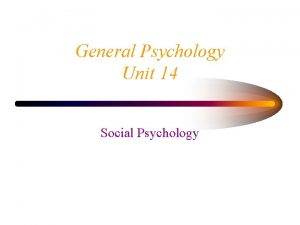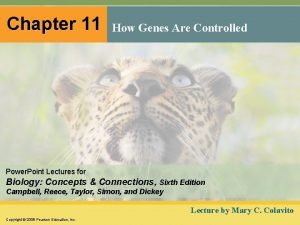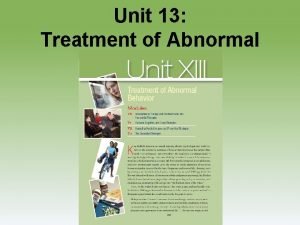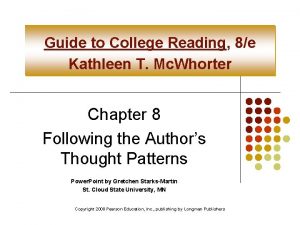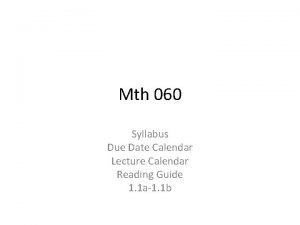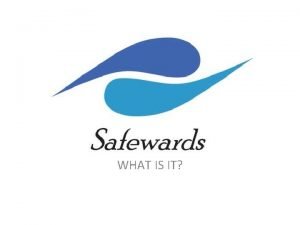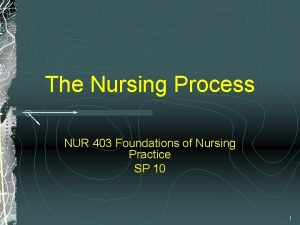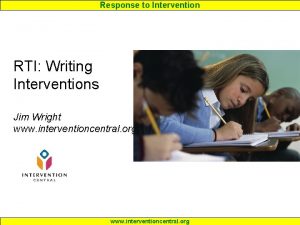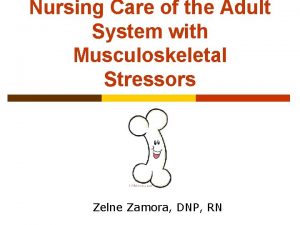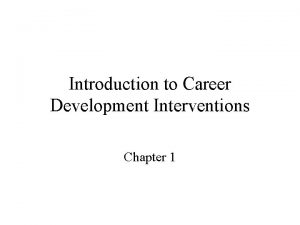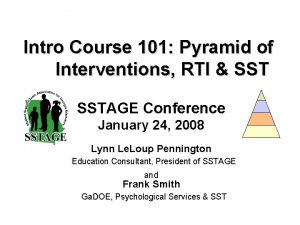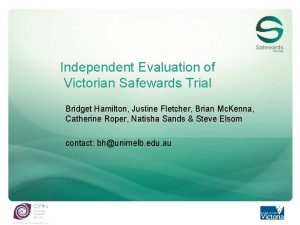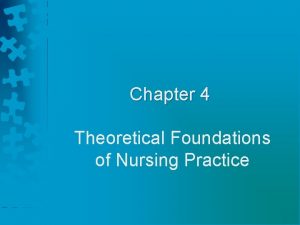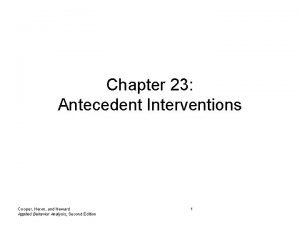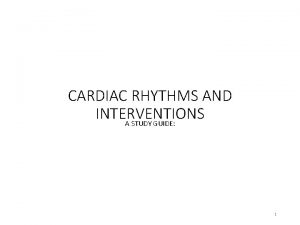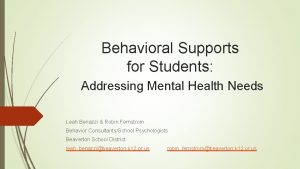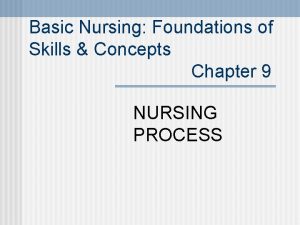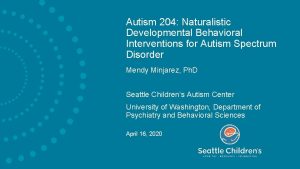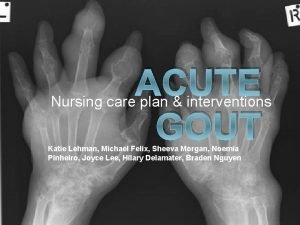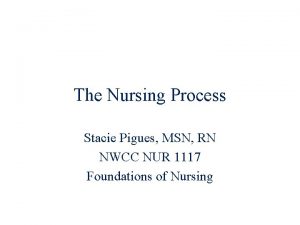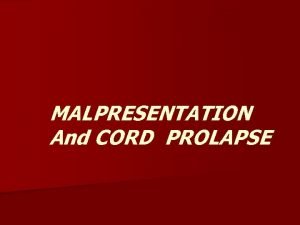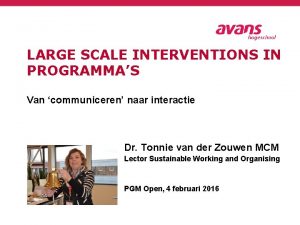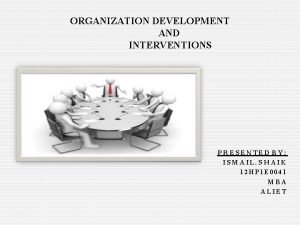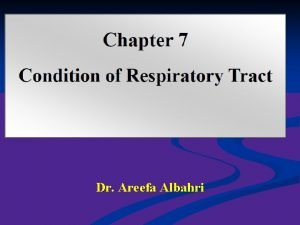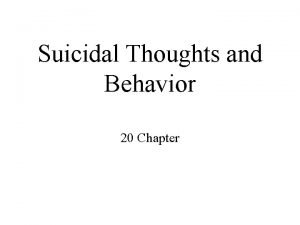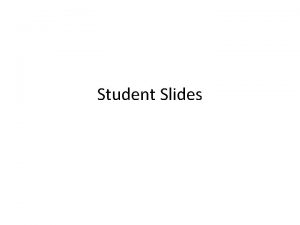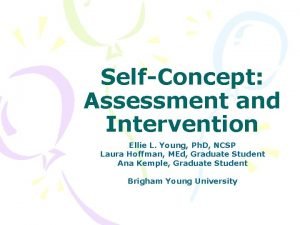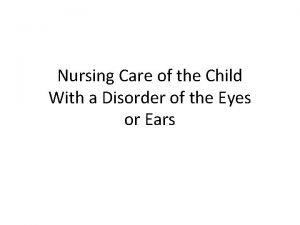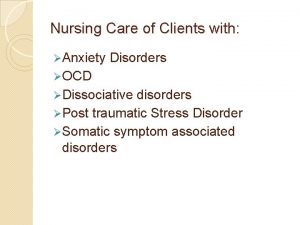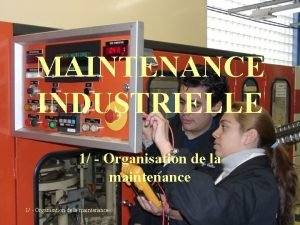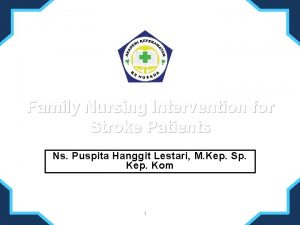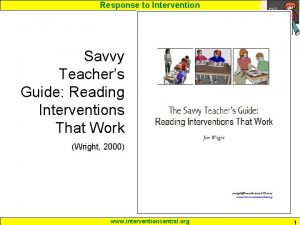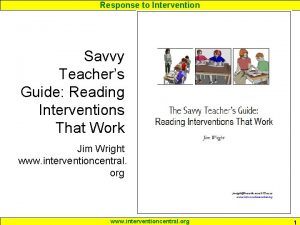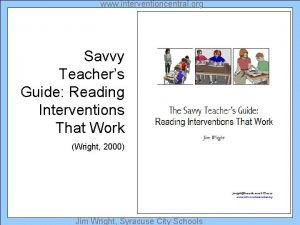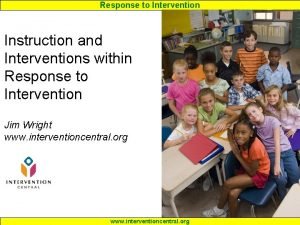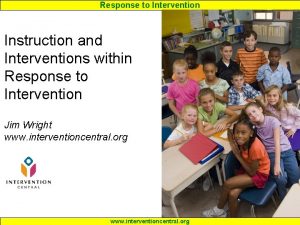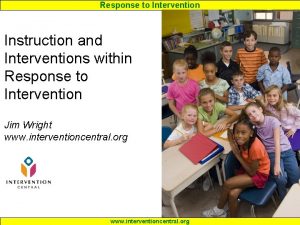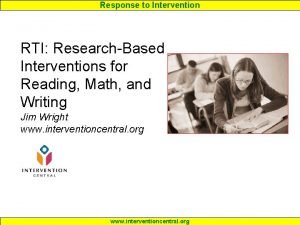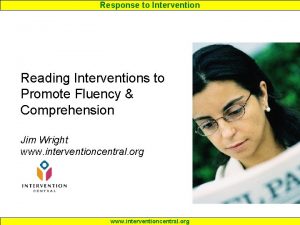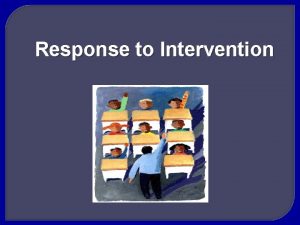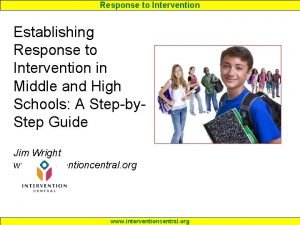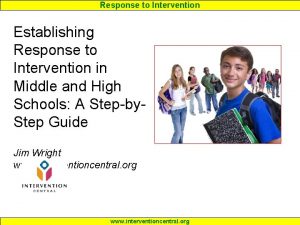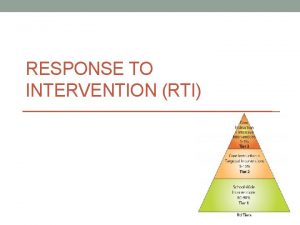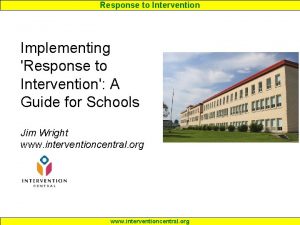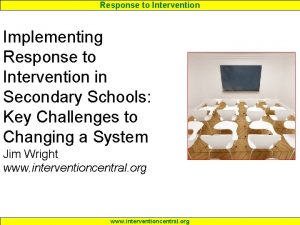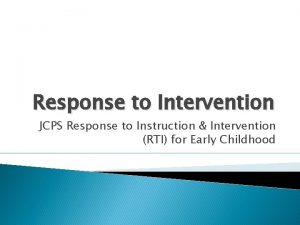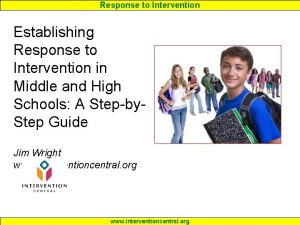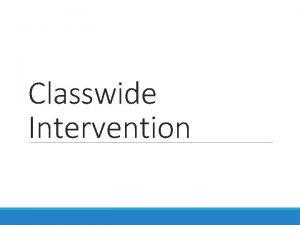Response to Intervention Savvy Teachers Guide Reading Interventions


































































![Response to Intervention Reading Comprehension ‘Fix-Up’ Skills: A Toolkit (Cont. ) • [Core Instruction] Response to Intervention Reading Comprehension ‘Fix-Up’ Skills: A Toolkit (Cont. ) • [Core Instruction]](https://slidetodoc.com/presentation_image/3816d541b15ab6954cdc044bad522cdd/image-67.jpg)
![Response to Intervention Reading Comprehension ‘Fix-Up’ Skills: A Toolkit (Cont. ) • [Accommodation] Developing Response to Intervention Reading Comprehension ‘Fix-Up’ Skills: A Toolkit (Cont. ) • [Accommodation] Developing](https://slidetodoc.com/presentation_image/3816d541b15ab6954cdc044bad522cdd/image-68.jpg)
![Response to Intervention Reading Comprehension ‘Fix-Up’ Skills: A Toolkit (Cont. ) • [Student Strategy] Response to Intervention Reading Comprehension ‘Fix-Up’ Skills: A Toolkit (Cont. ) • [Student Strategy]](https://slidetodoc.com/presentation_image/3816d541b15ab6954cdc044bad522cdd/image-69.jpg)
![Response to Intervention Reading Comprehension ‘Fix-Up’ Skills: A Toolkit (Cont. ) • [Student Strategy] Response to Intervention Reading Comprehension ‘Fix-Up’ Skills: A Toolkit (Cont. ) • [Student Strategy]](https://slidetodoc.com/presentation_image/3816d541b15ab6954cdc044bad522cdd/image-70.jpg)
![Response to Intervention Reading Comprehension ‘Fix-Up’ Skills: A Toolkit (Cont. ) • [Student Strategy] Response to Intervention Reading Comprehension ‘Fix-Up’ Skills: A Toolkit (Cont. ) • [Student Strategy]](https://slidetodoc.com/presentation_image/3816d541b15ab6954cdc044bad522cdd/image-71.jpg)
![Response to Intervention Reading Comprehension ‘Fix-Up’ Skills: A Toolkit (Cont. ) • [Student Strategy] Response to Intervention Reading Comprehension ‘Fix-Up’ Skills: A Toolkit (Cont. ) • [Student Strategy]](https://slidetodoc.com/presentation_image/3816d541b15ab6954cdc044bad522cdd/image-72.jpg)
![Response to Intervention Reading Comprehension ‘Fix-Up’ Skills: A Toolkit (Cont. ) • [Student Strategy] Response to Intervention Reading Comprehension ‘Fix-Up’ Skills: A Toolkit (Cont. ) • [Student Strategy]](https://slidetodoc.com/presentation_image/3816d541b15ab6954cdc044bad522cdd/image-73.jpg)
![Response to Intervention Reading Comprehension ‘Fix-Up’ Skills: A Toolkit (Cont. ) • Student Strategy] Response to Intervention Reading Comprehension ‘Fix-Up’ Skills: A Toolkit (Cont. ) • Student Strategy]](https://slidetodoc.com/presentation_image/3816d541b15ab6954cdc044bad522cdd/image-74.jpg)
![Response to Intervention Reading Comprehension ‘Fix-Up’ Skills: A Toolkit (Cont. ) • [Student Strategy] Response to Intervention Reading Comprehension ‘Fix-Up’ Skills: A Toolkit (Cont. ) • [Student Strategy]](https://slidetodoc.com/presentation_image/3816d541b15ab6954cdc044bad522cdd/image-75.jpg)
![Response to Intervention Reading Comprehension ‘Fix-Up’ Skills: A Toolkit (Cont. ) • [Student Strategy] Response to Intervention Reading Comprehension ‘Fix-Up’ Skills: A Toolkit (Cont. ) • [Student Strategy]](https://slidetodoc.com/presentation_image/3816d541b15ab6954cdc044bad522cdd/image-76.jpg)
![Response to Intervention Reading Comprehension ‘Fix-Up’ Skills: A Toolkit (Cont. ) • [Student Strategy] Response to Intervention Reading Comprehension ‘Fix-Up’ Skills: A Toolkit (Cont. ) • [Student Strategy]](https://slidetodoc.com/presentation_image/3816d541b15ab6954cdc044bad522cdd/image-77.jpg)


















- Slides: 95

Response to Intervention Savvy Teacher’s Guide: Reading Interventions That Work (Wright, 2000) Available for free from: www. interventioncentral. or g www. interventioncentral. org

Response to Intervention Creating an RTI Literacy Program at Tiers 1 & 2 That is Responsive to the Needs of All Students Jim Wright www. interventioncentral. org

Response to Intervention “ “Risk for reading failure always involves the interaction of a particular set of child characteristics with specific characteristics of the instructional environment. Risk status is not entirely inherent in the child, but always involves a “mismatch” between child characteristics and the instruction that is provided. ” (Foorman & Torgesen, 2001; p. 206). ” Source: Foorman, B. R. , & Torgesen, J. (2001). Critical elements of classroom and small-group instruction promote reading success in all children. Learning Disabilities Research & Practice, 16, 203 -212. www. interventioncentral. org 3

Response to Intervention Five Big Ideas in Reading • “Phonemic Awareness: The ability to hear and manipulate sounds in words. • Alphabetic Principle: The ability to associate sounds with letters and use these sounds to form words. • Fluency with Text: The effortless, automatic ability to read words in connected text. • Vocabulary: The ability to understand (receptive) and use (expressive) words to acquire and convey meaning. • Comprehension: The complex cognitive process involving the intentional interaction between reader and text to convey meaning. ” SOURCE: University of Oregon: http: //reading. uoregon. edu/big_ideas/trial_bi_index. php www. interventioncentral. org 4

Response to Intervention “…we want to emphasize that effective interventions for almost all children highly at risk for reading disabilities should contain strongly explicit instruction in the knowledge and skills required for learning to read words accurately and fluently, and that this instruction should be balanced and integrated with explicit instruction in other language and reading skills that are also important for good Source: Foorman, B. R. , & Torgesen, J. (2001). Critical elements of classroom and small-group instruction promote reading success in all children. Learning Disabilities Research & Practice, 16, reading comprehension. ” (Foorman 203 -212. & Torgesen, www. interventioncentral. org 2001; p. 209). “ ” 5

Response to Intervention Direct / Indirect Instruction Continuum “Literature-based instruction emphasizes use of authentic literature for independent reading, read-alouds, and collaborative discussions. It stands in contrast to skills-based programs that are typically defined as traditional programs that use a commercially available basal reading program and follow a sequence of skills ordered in difficulty. ” (Foorman & Torgesen, 2001; p. 204) “direct instruction in letter-sound correspondences practices in controlled vocabulary texts (direct code)” “less direct instruction in sound -spelling patterns embedded in trade books (embedded code)” (Foorman & Torgesen, 2001; p. 204) “implicit instruction in the alphabetic principle while reading trade books (implicit code)” (Foorman & Torgesen, 2001; p. 204) (Foorman & Torgesen, p. J. (2001). Critical elements of classroom and small-group Source: Foorman, B. R. , & 2001; Torgesen, 204) instruction promote reading success in all children. Learning Disabilities Research & Practice, 16, 203 -212. www. interventioncentral. org 6

Response to Intervention RTI Core Literacy Instruction: Elements 1. • • • Verify that the School’s Reading Program is ‘Evidence-Based’. The school has an evidencebased reading program in place for all elementary grades. The program is tied to a well-designed literacy curriculum and may consist of one or several commercial reading-instruction products. The program is supported by research as being effective. Teachers implementing the reading program at their grade level can describe its effective instructional elements. www. interventioncentral. org 7

Response to Intervention Clearinghouse for RTI Tier 1 -3 Programs • The What Works Clearinghouse (http: //ies. ed. gov/ncee/wwc/) is a federally-sponsored website that lists research supporting various Tier 1, 2, and 3 intervention programs. www. interventioncentral. org 8

Response to Intervention RTI Core Literacy Instruction: Elements 2. Use Benchmarking/Universal Screening Data to Verify that the Current Core Reading Program is Appropriate. The school uses benchmarking/universal screening data in literacy to verify that its current reading program can effectively meet the needs of its student population at each grade level. • In grades K-2, if fewer than 80% of students are successful on phonemic awareness and alphabetics screenings, the core reading program at that grade level is patterned after direct instruction (Foorman & Torgesen, 2001). • In grades K-2, if more than 80% of students are successful on phonemic awareness and alphabetics screenings, the school may choose to adopt a www. interventioncentral. org 9

Response to Intervention RTI Core Literacy Instruction: Elements 3. Establish a Breadth of Instructional Expertise in Reading. Teachers are knowledgeable about the causes of reading delays. They understand that the most common explanation for deficiencies in foundation reading skills for students entering kindergarten is that—prior to public school— those delayed students did not have the same exposure to spoken vocabulary, phonemic awareness activities, and print as did their more advanced classmates. Classroom teachers have the instructional expertise to teach children whose reading skills are up to 2 www. interventioncentral. org years below those of their classmates. 10

Response to Intervention RTI Core Literacy Instruction: Elements 4. Adopt Efficient Methods of Instructional Delivery and Time Management. The teacher uses an appropriate range of efficient instructional delivery and time-management methods to match student readers to effective learning activities. Examples include: • reading centers (Kosanovich et al. , n. d. ) • using students as peer tutors (e. g. Mathes et al. , 2003) • incorporating paraprofessionals (Foorman, Breier, & Fletcher, 2003), adult volunteer tutors, or other non-instructional personnel under teacher supervision to review and reinforce student reading skills • scheduling core literacy instruction at the same time for www. interventioncentral. org each grade level to allow 11

Response to Intervention “The most effective early intervention is prevention—in the form of differentiated classroom instruction. Many techniques and programs exist for helping classroom teachers with small-group instruction, such as classwide peer tutoring…and cooperative grouping. But one of the persistent problems of differentiated classroom instruction is how to engage classroom teachers in progress monitoring and Source: continuous Foorman, B. R. , & Moats, L. C. (2004). Conditions for sustaining research-based practices in early reading instruction. Remedial & Special Education, 25, 51 -60. translating the results of assessment “ ” www. interventioncentral. org 12

Response to Intervention Building Tier 1 Capacity in the Teaching of Reading: Example of Differentiating Instruction • • • In grades K-3, teachers can differentiate instruction for children during the block of ‘core literacy instruction’ through flexible small-group instruction. Reading centers are set up in the classroom, at which students might work in groups, in pairs, or individually. These centers might be designed for students to access independently or to be teacher-led. Group sizes can range from 3 -5 for ‘struggling students’ up to 5 -7 for those students who are on grade level. Source: Kosanovich, M. , Ladinsky, K. , Nelson, L. , & Torgesen, J. (n. d. ). Differentiated reading instruction: Small group alternative lesson structures for all students. Florida Center for Reading Research. Retrieved on November 5, 2008, from http: //www. fcrr. org/assessment/pdf/small. Group. Alternative. Lesson. Structures. pdf www. interventioncentral. org 13

Response to Intervention Building Tier 1 Capacity in the Teaching of Reading: Example of Differentiating Instruction (Cont. ) Reading center activities can include guided reading and skills-focused lessons. • ‘Guided reading’ activities provide more general reading instruction. The teacher guides a group discussion of the text (e. g. , selection of the text, introducing the text to students, talking about the content of the text, providing instruction in ‘strategic strategies’ to better access the text, etc. ). • ‘Skills-focused’ lessons provide specific, focused instruction and practice in crucial reading skills (e. g. , letter -sound correspondence, phoneme segmentation). Students with similar reading deficits are placed in specific Source: Kosanovich, M. , Ladinsky, K. , Nelson, L. , & Torgesen, J. (n. d. ). Differentiated reading skills-focused groups to structures allow targeted interventions. instruction: Small group alternative lesson for all students. Florida Center for Reading Research. Retrieved on November 5, 2008, from http: //www. fcrr. org/assessment/pdf/small. Group. Alternative. Lesson. Structures. pdf www. interventioncentral. org 14

Response to Intervention Building Tier 1 Capacity in the Teaching of Reading: Example of Differentiating Instruction (Cont. ) • • The teacher determines the composition and instructional activities to be used in reading centers via ongoing reading assessment information (e. g. , DIBELS progressmonitoring data, classroom observations, etc. ). The teacher creates a master ‘reading center’ schedule ( a series of teacher-led and independent reading centers to accommodate all students in the classroom). Recruitment for reading centers is flexible: Children are assigned to specific reading centers based on their reading profile. Those center assignments are regularly updated based on classroom reading assessment data. Source: Kosanovich, M. , Ladinsky, K. , Nelson, L. , & Torgesen, J. (n. d. ). Differentiated reading instruction: Small group alternative lesson structures for all students. Florida Center for Reading Research. Retrieved on November 5, 2008, from http: //www. fcrr. org/assessment/pdf/small. Group. Alternative. Lesson. Structures. pdf www. interventioncentral. org 15

Response to Intervention Peer Tutors as Vehicle for Instructional Delivery: PALS “Peer-Assisted Learning Strategies (PALS) is a peer- tutoring program. …it is designed to be incorporated into the existing curriculum with the goal of improving the academic performance of children with diverse academic needs. Teachers train students to use PALS procedures. Students partner with peers, alternating the role of tutor while reading aloud, listening, and providing feedback in various structured activities. PALS is typically implemented three times a week for 30 to 35 minutes. Although PALS can be used in different subject areas and grade levels, this intervention report focuses on the use of PALS to improve reading skills of students in kindergarten through third grade… PALS was found to have potentially positive effects on alphabetics, fluency, and comprehension. ” Source: What Works Clearinghouse. Peer-Assisted Learning Strategies (PALS). Retrieved on May 8, 2007, from https: //dibels. uoregon. edu/ www. interventioncentral. org 16

Response to Intervention Scheduling Elementary Tier 2 Interventions Option 3: ‘Floating RTI’: Gradewide Shared Schedule. Each grade has a scheduled RTI time across classrooms. No two grades share the same RTI time. Advantages are that outside providers can move from grade to grade providing push-in or pull-out services and that students can be grouped by need across different teachers within grade. Anyplace Elementary School: RTIthe Daily Schedule Grade K Classroom 1 Classroom 2 Classroom 3 9: 00 -9: 30 Grade 1 Classroom 2 Classroom 3 9: 45 -10: 15 Grade 2 Classroom 1 Classroom 2 Classroom 3 Grade 3 Classroom 1 Classroom 2 Classroom 3 10: 3011: 00 12: 30 -1: 00 Grade 4 Classroom 1 Classroom 2 Classroom 3 1: 15 -1: 45 Grade 5 Classroom 1 Classroom 2 Classroom 3 2: 00 -2: 30 Source: Burns, M. K. , & Gibbons, K. A. (2008). Implementing response-to-intervention in elementary and secondary schools: Procedures to assure scientific-based practices. New York: Routledge. www. interventioncentral. org 17

Response to Intervention RTI Core Literacy Instruction: Elements Mass Resources for Focused Literacy Instruction & Intervention in the Primary Grades. The school organizes its resources to provide the most intensive general-education literacy instruction and intervention support at the early grades – Grades K through 2— because research suggests that student reading deficits can be addressed in these primary grades with far less effort and with better outcomes than for students whose reading deficits are addressed in later grades (Foorman, Breier, & Fletcher, 2003), . www. interventioncentral. org 18

Response to Intervention RTI Core Literacy Instruction: Elements Avoid Use of Less Effective Reading Instructional Strategies. Classrooms make minimal use of inefficient instructional reading activities such as Round Robin Reading that can result in poor modeling of text reading and reduced rates of actual student reading engagement--and may also cause emotional distress for poor readers (Ash, Kuhn, & Walpole, 2009; Ivey, 1999). Furthermore, the school has a clear and shared understanding that purposeful, focused reading interventions are required to help struggling readers: The passive strategy of grade-retention has not www. interventioncentral. org been shown to be an effective means of 19

Response to Intervention “Children’s status as readers is established early… Torgesen et al. (1997) showed that over 8 of 10 children with severe word reading problems at the end of the first grade performed below the average at the beginning of the third grade. Such evidence supports the view that early reading problems are the result of deficits rather than delay. In other words, the early childhood mantra has no Source: “Just Foorman, B. wait; R. , Breier, they’ll J. Il, & Fletcher, J. catch M. (2003). up” Interventions aimed at improving reading success: An evidence-based approach. Developmental Neuropsychology, 24, 613 -639. empirical basis. ” (Foorman, Breier, & “ ” www. interventioncentral. org 20

Response to Intervention RTI Core Literacy Instruction: Elements Adopt Evidence-Based Tier 2 (Supplemental) Reading Interventions for Struggling Students. The school has a range of evidence-based Tier 2 intervention options for those students who fail to respond adequately to classroom literacy instruction alone. Tier 2 instruction is more explicit (e. g. , contains more direct-instruction elements), intensive (e. g. , more teacher attention), and supportive (e. g. , timely performance feedback, praise, and encouragement) than the reading www. interventioncentral. org 21

Response to Intervention RTI Core Literacy Instruction: Elements Promote Ongoing Professional Development. The school supports teachers with professional development as they implement any reading program (Foorman, Breier, & Fletcher, 2003). Training addresses such key topics as: • understanding the underlying research, instructional objectives, and components of the program • managing the classroom during reading activities • moving at an appropriate instructional pace • grouping students. www. interventioncentral. org 22

Response to Intervention References • • Ash, G. E. , Kuhn, M. R. , & Walpole, S. (2009). Analyzing “inconsistencies” in practice: Teachers' continued use of round robin reading. Reading & Writing Quarterly, 25, 87 -103. Burns, M. K. , & Gibbons, K. A. (2008). Implementing response-tointervention in elementary and secondary schools: Procedures to assure scientific-based practices. New York: Routledge. Foorman, B. R. , Breier, J. Il, & Fletcher, J. M. (2003). Interventions aimed at improving reading success: An evidence-based approach. Developmental Neuropsychology, 24, 613 -639. Foorman, B. R. , & Torgesen, J. (2001). Critical elements of classroom and small-group instruction promote reading success in all children. Learning Disabilities Research & Practice, 16, 203 -212. Ivey, G. (1999). A multicase study in the middle school: Complexities among young adolescent readers. Reading Research Quarterly, 34, 172192. Kosanovich, M. , Ladinsky, K. , Nelson, L. , & Torgesen, J. (n. d. ). Differentiated reading instruction: Small group alternative lesson structures for all students. Florida Center for Reading Research. Retrieved on November 5, 2008, from http: //www. fcrr. org/assessment/pdf/small. Group. Alternative. Lesson. Structures. pdf Mathes, P. G. , Torgesen, J. K. , Clancy-Menchetti, J. , Santi, K. , Nicholas, K. , Robinson, C. , Grek, M. (2003). A comparison of teacher-directed versus www. interventioncentral. org 23

Response to Intervention Tier 1 (Classroom) Literacy Interventions for Middle & High Schools: A Skill. Building Lab Jim Wright www. interventioncentral. org

Response to Intervention 1. 2. 3. 4. 5. 6. 7. 8. 9. ‘Fifteen Elements of Effective Adolescent Literacy Programs’ 10. Extended time for literacy Direct, explicit comprehension across classes instruction 11. Professional development Effective instructional 12. Ongoing summative principles embedded in content assessment of students Motivation and selfand programs directed learning 13. Teacher teams Text-based collaborative (interdisciplinary with a learning student problem-solving Formative evaluation of focus) reading skills Strategic tutoring 14. Leadership Diverse texts 15. Comprehensive and Intensive Source: Biancarosa, writing C. , & Snow, C. E. (2006). Reading next—A vision for action and research in coordinated literacy middle and high schoolcomponent literacy: A report to Carnegie Corporation of New York (2 nd Technology ed. ). Washington, DC: Alliance for Excellent Education. program Retrieved from (interdisciplinary, http: //www. all 4 ed. org/files/Reading. Next. pdf www. interventioncentral. org interdepartmental) 25

Response to Intervention Promoting Literacy in Middle & High School Classrooms: Three Elements • Explicit vocabulary instruction • Reading comprehension • Extended discussion Source: Kamil, M. L. , Borman, G. D. , Dole, J. , Kral, C. C. , Salinger, T. , & Torgesen, J. (2008). Improving adolescent literacy: Effective classroom and intervention practices: A practice guide (NCEE #2008 -4027). Washington, DC: National Center for Education Evaluation and Regional Assistance, Institute of Education Sciences, U. S. Department of Education. Retrieved from http: //ies. ed. gov/ncee/wwc. www. interventioncentral. org 26

Response to Intervention RTI & Secondary Literacy: Explicit Vocabulary Instruction (pp. 12 -19) www. interventioncentral. org

Response to Intervention Vocabulary: Why This Instructional Goal is Important As vocabulary terms become more specialized in content area courses, students are less able to derive the meaning of unfamiliar words from context alone. Students must instead learn vocabulary through more direct means, including having opportunities to explicitly memorize words and their definitions. Students may require 12 to 17 meaningful exposures to a word to learn it. www. interventioncentral. org 28

Response to Intervention Differences in Vocabulary Development Between Stronger and Weaker Students “Vocabulary difficulties are not unique to advanced readers as they typically show up before third grade. At that point, those with high vocabularies know thousands more word meanings and are learning new ones at a much faster rate than those experiencing difficulties. Biemiller and Slonim (2001), for example, found the highest quartile primary students learned approximately three words a day compared to 1. 5 for the lowest quartile students. By high school, top achievers have been shown to know four times the words of lower performing classmates. Perhaps the most disturbing fact about these trends is that they Source: Howell, K. W. (2008). Best practices in curriculum-based evaluation and advanced persist. ” p. &401 reading. In A. Thomas J. Grimes (Eds. ), Best practices in school psychology V (pp. 397 -413). www. interventioncentral. org 29

Response to Intervention Provide Dictionary Training The student is trained to use an Internet lookup strategy to better understand dictionary or glossary definitions of key vocabulary items. – The student first looks up the word and its meaning(s) in the dictionary/glossary. – If necessary, the student isolates the specific word meaning that appears to be the appropriate match for the term as it appears in course texts and discussion. – The student goes to an Internet search engine (e. g. , Google) and locates at least five text samples in which the term is used in context and www. interventioncentral. org 30

Response to Intervention Promote ‘Wide Reading’ Students read widely in the content area, using texts that supplement and extend information supplied by the textbook. ‘Wide reading’ results in substantial increases in student vocabulary over time due to incidental learning. To strengthen the positive impact of wide reading on vocabulary development, have student texts available that vary in difficulty and that are of high interest. Discuss readings in class. Experiment with ways to document student independent reading and integrate that ‘wide reading’ into an effort grade for the course. If needed, build time into www. interventioncentral. org 31

Response to Intervention Hold ‘Read-Alouds’ Select texts that supplement the course textbook and that illustrate central concepts and contain important vocabulary covered in the course. Read those texts aloud for 3 to 5 minutes per class session--while students follow along silently. Read-alouds provide students with additional exposure to vocabulary items in context. They can also lower the threshold of difficulty: Students may be more likely to attempt to read an assigned text independently if they have already gotten a start in the text by listening to a more advanced reader read the first few pages aloud. Read-alouds can support other vocabulary www. interventioncentral. org 32

Response to Intervention Provide Regular In-Class Instruction and Review of Vocabulary Terms, Definitions Present important new vocabulary terms in class, along with student-friendly definitions. Provide ‘example sentences’ to illustrate the use of the term. Assign students to write example sentences employing new vocabulary to illustrate their mastery of the terms. www. interventioncentral. org 33

Response to Intervention Generate ‘Possible Sentences’ The teacher selects 6 to 8 challenging new vocabulary terms and 4 to 6 easier, more familiar vocabulary items relevant to the lesson. Introduce the vocabulary terms to the class. Have students write sentences that contain at least two words from the posted vocabulary list. Then write examples of student sentences on the board until all words from the list have been used. After the assigned reading, review the ‘possible sentences’ that were previously generated. Evaluate as a group whether, based on the passage, the sentence is ‘possible’ (true) in its current form. If needed, have the group www. interventioncentral. org 34

Response to Intervention Enhance Vocabulary Instruction Through Use of Graphic Organizers or Displays: A Sampling Teachers can use graphic displays to structure their vocabulary discussions and activities (Boardman et al. , 2008; Fisher, 2007; Texas Reading Initiative, 2002). www. interventioncentral. org 35

Response to Intervention 4 -Square Graphic Display The student divides a page into four quadrants. In the upper left section, the student writes the target word. In the lower left section, the student writes the word definition. In the upper right section, the student generates a list of examples that illustrate the term, and in the lower right section, the student writes ‘non-examples’ (e. g. , terms that are the opposite of the target vocabulary word). www. interventioncentral. org 36

Response to Intervention www. interventioncentral. org 37

Response to Intervention Semantic Word Definition Map The graphic display contains sections in which the student writes the word, its definition (‘what is this? ’), additional details that extend its meaning (‘What is it like? ’), as well as a listing of examples and ‘non-examples’ (e. g. , terms that are the opposite of the target vocabulary word). www. interventioncentral. org 38

Response to Intervention Word Definition Map Example www. interventioncentral. org 39

Response to Intervention www. interventioncentral. org 40

Response to Intervention Semantic Feature Analysis A target vocabulary term is selected for analysis in this grid-like graphic display. Possible features or properties of the term appear along the top margin, while examples of the term are listed ion the left margin. The student considers the vocabulary term and its definition. Then the student evaluates each example of the term to determine whether it does or does not match each possible term property or element. www. interventioncentral. org 41

Response to Intervention Semantic Feature Analysis Example • VOCABULARY TERM: TRANSPORTATION www. interventioncentral. org 42

Response to Intervention www. interventioncentral. org 43

Response to Intervention Comparison/Contrast (Venn) Diagram Two terms are listed and defined. For each term, the student brainstorms qualities or properties or examples that illustrate the term’s meaning. Then the student groups those qualities, properties, and examples into 3 sections: A. items unique to Term 1 B. items unique to Term 2 C. items shared by both terms www. interventioncentral. org 44

Response to Intervention www. interventioncentral. org 45

Response to Intervention RTI & Secondary Literacy: Extended Discussion (pp. 20 -21) www. interventioncentral. org

Response to Intervention Extended Discussions: Why This Instructional Goal is Important Extended, guided group discussion is a powerful means to help students to learn vocabulary and advanced concepts. Discussion can also model for students various ‘thinking processes’ and cognitive strategies (Kamil et al. 2008, p. 22). To be effective, guided discussion should go beyond students answering a series of factual questions posed by the teacher: Quality discussions are typically open-ended and exploratory in nature, allowing for multiple points of view (Kamil et al. , 2008). When group discussion is used regularly and well in instruction, students show increased growth in literacy skills. Content-area teachers can use it to demonstrate the ‘habits of mind’ and patterns of thinking of experts in various their discipline: e. g. , historians, www. interventioncentral. org 48

Response to Intervention Use a ‘Standard Protocol’ to Structure Extended Discussions Good extended classwide discussions elicit a wide range of student opinions, subject individual viewpoints to critical scrutiny in a supportive manner, put forth alternative views, and bring closure by summarizing the main points of the discussion. Teachers can use a simple structure to effectively and reliably organize their discussions… www. interventioncentral. org 49

Response to Intervention ‘Standard Protocol’ Discussion Format A. Pose questions to the class that require students to explain their positions and their reasoning. B. When needed, ‘think aloud’ as the discussion leader to model good reasoning practices (e. g. , taking a clear stand on a topic). C. Supportively challenge student views by offering possible counter arguments. D. Single out and mention examples of effective student reasoning. E. Avoid being overly directive; the purpose of extended discussions is to more fully investigate and think about complex topics. F. Sum up the general ground covered in the discussion and highlight the main ideas covered. www. interventioncentral. org 50

Response to Intervention Team Activity: Evaluate ‘Extended Discussion’ Strategies • Review the ‘Troubleshooting Tips’ and ‘Building Capacity’ sections of the intervention writeup. • Share your thoughts about how you would promote the use of this strategy in your classrooms. • Devise at least ONE strategy to move forward in getting www. interventioncentral. org 51

Response to Intervention RTI & Secondary Literacy: Reading Comprehension www. interventioncentral. org

Response to Intervention Reading Comprehension: Why This Instructional Goal is Important Students require strong reading comprehension skills to succeed in challenging content-area classes. At present, there is no clear evidence that any one reading comprehension instructional technique is clearly superior to others. In fact, it appears that students benefit from being taught any self-directed practice that prompts them to engage more actively in understanding the meaning of text (Kamil et al. , 2008). www. interventioncentral. org 53

Response to Intervention Assist Students in Setting ‘Content Goals’ for Reading Students are more likely to be motivated to read--and to read more closely—if they have specific content-related reading goals in mind. At the start of a reading assignment, for example, the instructor has students state what questions they might seek to answer or what topics they would like to learn more about in their reading. The student or teacher writes down these questions. After students have completed the assignee reading, they review their original questions and share what they have learned (e. g. , through discussion in large group orwww. interventioncentral. org cooperative learning group, or 54

Response to Intervention Characteristics of the Middle or High School Reader “…intermediate and secondary grade students who are not proficient with beginning reading skills most often have learned an array of “misrules” or ineffective reading tactics that need to be corrected or unlearned as they acquire advance reading skills. Thus, the content of corrective reading instruction can differ in important ways from beginning and even from remedial reading instruction. . . ” Source: Howell, K. W. (2008). Best practices in curriculum-based evaluation and advanced reading. In A. Thomas & J. Grimes (Eds. ), Best practices in school psychology V (pp. 397 -413). www. interventioncentral. org 55

Response to Interventions for…Improving Comprehension • • ‘Click or Clunk? ’ Self-Check Keywords: A Memorization Strategy Main Idea Maps Mental Imagery: Improving Text Recall Oral Recitation Lesson Prior Knowledge: Activating the ‘Known’ Question-Generation Reciprocal Teaching: A Reading Comprehension Package • Story Map • Text Lookback www. interventioncentral. org

Response to Intervention Main Idea Maps (p. 26) This simple strategy teaches students to generate a graphic organizer containing the main ideas and supporting details of each paragraph in an expository passage. www. interventioncentral. org

Response to Intervention Main Idea Maps: Sample Graphic Organizer (p. 28) www. interventioncentral. org

Response to Intervention Mental Imagery: Improving Text Recall (p. 29) By constructing “mental pictures” of what they are reading and closely studying text illustrations, students increase their reading comprehension. www. interventioncentral. org

Response to Intervention Characteristics of the Middle or High School Reader (Cont. ) “…because students who have trouble reading read less material (even if they have read for the same total amount of time), they will have encountered fewer words and ideas by the time they read the upper grades…. This limited pool of background (i. e. , prior) knowledge will make it more difficult for them to learn new information from text, even if the reading problem is magically corrected over night. In many instances, this lack of prior/background knowledge is the most significant learning characteristic of this group of students. ” p. 400 Source: Howell, K. W. (2008). Best practices in curriculum-based evaluation and advanced reading. In A. Thomas & J. Grimes (Eds. ), Best practices in school psychology V (pp. 397 -413). www. interventioncentral. org 60

Response to Intervention Through a series of guided questions, the instructor helps students activate their prior knowledge of a Prior specific topic to help them Knowledge: comprehend the content of a story or article on the Activating same topic. Linking new the facts to prior knowledge ‘Known’ increases a student’s (p. 31) inferential comprehension (ability to place novel information in a meaningful context by comparing it to already-learned www. interventioncentral. org

Response to Intervention Activating Prior Knowledge: Student Exercise www. interventioncentral. org

Response to Intervention Question Generation (p. 35) Students are taught to boost their comprehension of expository passages by (1) locating the main idea or key ideas in the passage and (2) generating questions based on that information. www. interventioncentral. org

Response to Intervention Text Lookback (p. 37) Text lookback is a simple strategy that students can use to boost their recall of expository prose by looking back in the text for important information. www. interventioncentral. org

Response to Intervention Reading Interventions: Activity In your groups… • Review the reading-related intervention ideas in your handout. 1. Academic & Content-Area Vocabulary p. 12 2. Extended Classroom Discussion p. 20 3. Main Idea Maps p. 26 4. Mental Imagery p. 29 5. Activating the Known p. 31 6. Question Generation p. 35 7. Text Lookback p. 37 • Select at least 1 idea that you think that your school could use right away. What kind of classroom or building preparation would be required? www. interventioncentral. org

Response to Intervention Promoting Student Reading Comprehension ‘Fix-Up’ Skills Jim Wright www. interventioncentral. org

Response to Intervention Reading Comprehension ‘Fix-Up’ Skills: A Toolkit Good readers continuously monitor their understanding of informational text. When necessary, they also take steps to improve their understanding of text through use of reading comprehension ‘fix-up’ skills. Presented here a series of fix-up skill strategies that can help struggling students to better understand difficult reading assignments… www. interventioncentral. org 67
![Response to Intervention Reading Comprehension FixUp Skills A Toolkit Cont Core Instruction Response to Intervention Reading Comprehension ‘Fix-Up’ Skills: A Toolkit (Cont. ) • [Core Instruction]](https://slidetodoc.com/presentation_image/3816d541b15ab6954cdc044bad522cdd/image-67.jpg)
Response to Intervention Reading Comprehension ‘Fix-Up’ Skills: A Toolkit (Cont. ) • [Core Instruction] Providing Main Idea Practice through ‘Partner Retell’ (Carnine & Carnine, 2004). Students in a group or class are assigned a text selection to read silently. Students are then paired off, with one student assigned the role of ‘reteller’ and the other appointed as ‘listener’. The reteller recounts the main idea to the listener, who can comment or ask questions. The teacher then states the main idea to the class. Next, the reteller locates two key details from the reading that support the main idea and shares these with the listener. At the end of the activity, the teacher does a spot check by randomly calling on one or more students in the listener role and asking them to www. interventioncentral. org 68
![Response to Intervention Reading Comprehension FixUp Skills A Toolkit Cont Accommodation Developing Response to Intervention Reading Comprehension ‘Fix-Up’ Skills: A Toolkit (Cont. ) • [Accommodation] Developing](https://slidetodoc.com/presentation_image/3816d541b15ab6954cdc044bad522cdd/image-68.jpg)
Response to Intervention Reading Comprehension ‘Fix-Up’ Skills: A Toolkit (Cont. ) • [Accommodation] Developing a Bank of Multiple Passages to Present Challenging Concepts (Hedin & Conderman, 2010; Kamil et al. , 2008; Texas Reading Initiative, 2002). The teacher notes which course concepts, cognitive strategies, or other information will likely present the greatest challenge to students. For these ‘challenge’ topics, the teacher selects alternative readings that present the same general information and review the same key vocabulary as the course text but that are more accessible to struggling readers (e. g. , with selections written at an easier reading level or that use graphics to visually illustrate concepts). These alternative selections are organized into a bank that 69 www. interventioncentral. org
![Response to Intervention Reading Comprehension FixUp Skills A Toolkit Cont Student Strategy Response to Intervention Reading Comprehension ‘Fix-Up’ Skills: A Toolkit (Cont. ) • [Student Strategy]](https://slidetodoc.com/presentation_image/3816d541b15ab6954cdc044bad522cdd/image-69.jpg)
Response to Intervention Reading Comprehension ‘Fix-Up’ Skills: A Toolkit (Cont. ) • [Student Strategy] Promoting Understanding & Building Endurance through Reading-Reflection Pauses (Hedin & Conderman, 2010). The student decides on a reading interval (e. g. , every four sentences; every 3 minutes; at the end of each paragraph). At the end of each interval, the student pauses briefly to recall the main points of the reading. If the student has questions or is uncertain about the content, the student rereads part or all of the section just read. This strategy is useful both for students who need to monitor their understanding as well as those who benefit from brief breaks when engaging in intensive reading as a means to build up endurance as www. interventioncentral. org attentive readers. 70
![Response to Intervention Reading Comprehension FixUp Skills A Toolkit Cont Student Strategy Response to Intervention Reading Comprehension ‘Fix-Up’ Skills: A Toolkit (Cont. ) • [Student Strategy]](https://slidetodoc.com/presentation_image/3816d541b15ab6954cdc044bad522cdd/image-70.jpg)
Response to Intervention Reading Comprehension ‘Fix-Up’ Skills: A Toolkit (Cont. ) • [Student Strategy] Identifying or Constructing Main Idea Sentences (Davey & Mc. Bride, 1986; Rosenshine, Meister & Chapman, 1996). For each paragraph in an assigned reading, the student either (a) highlights the main idea sentence or (b) highlights key details and uses them to write a ‘gist’ sentence. The student then writes the main idea of that paragraph on an index card. On the other side of the card, the student writes a question whose answer is that paragraph’s main idea sentence. This stack of ‘main idea’ cards becomes a useful tool to review assigned readings. www. interventioncentral. org 71
![Response to Intervention Reading Comprehension FixUp Skills A Toolkit Cont Student Strategy Response to Intervention Reading Comprehension ‘Fix-Up’ Skills: A Toolkit (Cont. ) • [Student Strategy]](https://slidetodoc.com/presentation_image/3816d541b15ab6954cdc044bad522cdd/image-71.jpg)
Response to Intervention Reading Comprehension ‘Fix-Up’ Skills: A Toolkit (Cont. ) • [Student Strategy] Restructuring Paragraphs with Main Idea First to Strengthen ‘Rereads’ (Hedin & Conderman, 2010). The student highlights or creates a main idea sentence for each paragraph in the assigned reading. When rereading each paragraph of the selection, the student (1) reads the main idea sentence or student-generated ‘gist’ sentence first (irrespective of where that sentence actually falls in the paragraph); (2) reads the remainder of the paragraph, and (3) reflects on how the main idea relates to the paragraph content. www. interventioncentral. org 72
![Response to Intervention Reading Comprehension FixUp Skills A Toolkit Cont Student Strategy Response to Intervention Reading Comprehension ‘Fix-Up’ Skills: A Toolkit (Cont. ) • [Student Strategy]](https://slidetodoc.com/presentation_image/3816d541b15ab6954cdc044bad522cdd/image-72.jpg)
Response to Intervention Reading Comprehension ‘Fix-Up’ Skills: A Toolkit (Cont. ) • [Student Strategy] Summarizing Readings (Boardman et al. , 2008). The student is taught to summarize readings into main ideas and essential details--stripped of superfluous content. The act of summarizing longer readings can promote understanding and retention of content while the summarized text itself can be a useful study tool. www. interventioncentral. org 73
![Response to Intervention Reading Comprehension FixUp Skills A Toolkit Cont Student Strategy Response to Intervention Reading Comprehension ‘Fix-Up’ Skills: A Toolkit (Cont. ) • [Student Strategy]](https://slidetodoc.com/presentation_image/3816d541b15ab6954cdc044bad522cdd/image-73.jpg)
Response to Intervention Reading Comprehension ‘Fix-Up’ Skills: A Toolkit (Cont. ) • [Student Strategy] Linking Pronouns to Referents (Hedin & Conderman, 2010). Some readers lose the connection between pronouns and the nouns that they refer to (known as ‘referents’)— especially when reading challenging text. The student is encouraged to circle pronouns in the reading, to explicitly identify each pronoun’s referent, and (optionally) to write next to the pronoun the name of its referent. For example, the student may add the referent to a pronoun in this sentence from a biology text: “The Cambrian Period is the first geological age that has large numbers of multi-celled organisms associated with it Cambrian Period. ” www. interventioncentral. org 74
![Response to Intervention Reading Comprehension FixUp Skills A Toolkit Cont Student Strategy Response to Intervention Reading Comprehension ‘Fix-Up’ Skills: A Toolkit (Cont. ) • Student Strategy]](https://slidetodoc.com/presentation_image/3816d541b15ab6954cdc044bad522cdd/image-74.jpg)
Response to Intervention Reading Comprehension ‘Fix-Up’ Skills: A Toolkit (Cont. ) • Student Strategy] Apply Vocabulary ‘Fix-Up’ Skills for Unknown Words (Klingner & Vaughn, 1999). When confronting an unknown word in a reading selection, the student applies the following vocabulary ‘fix-up’ skills: 1. Read the sentence again. 2. Read the sentences before and after the problem sentence for clues to the word’s meaning. 3. See if there are prefixes or suffixes in the word that can give clues to meaning. 4. Break the word up by syllables and look for ‘smaller words’ within. www. interventioncentral. org 75
![Response to Intervention Reading Comprehension FixUp Skills A Toolkit Cont Student Strategy Response to Intervention Reading Comprehension ‘Fix-Up’ Skills: A Toolkit (Cont. ) • [Student Strategy]](https://slidetodoc.com/presentation_image/3816d541b15ab6954cdc044bad522cdd/image-75.jpg)
Response to Intervention Reading Comprehension ‘Fix-Up’ Skills: A Toolkit (Cont. ) • [Student Strategy] Compiling a Vocabulary Journal from Course Readings (Hedin & Conderman, 2010). The student highlights new or unfamiliar vocabulary from course readings. The student writes each term into a vocabulary journal, using a standard ‘sentence-stem’ format: e. g. , “Mitosis means…” or “A chloroplast is…”. If the student is unable to generate a definition for a vocabulary term based on the course reading, he or she writes the term into the vocabulary journal without definition and then applies other strategies to define the term: e. g. , look up the term in a dictionary; use Google to locate two examples of the term being used correctly in context; ask the www. interventioncentral. org 76
![Response to Intervention Reading Comprehension FixUp Skills A Toolkit Cont Student Strategy Response to Intervention Reading Comprehension ‘Fix-Up’ Skills: A Toolkit (Cont. ) • [Student Strategy]](https://slidetodoc.com/presentation_image/3816d541b15ab6954cdc044bad522cdd/image-76.jpg)
Response to Intervention Reading Comprehension ‘Fix-Up’ Skills: A Toolkit (Cont. ) • [Student Strategy] Encouraging Student Use of Text Enhancements (Hedin & Conderman, 2010). Text enhancements can be used to tag important vocabulary terms, key ideas, or other reading content. If working with photocopied material, the student can use a highlighter to note key ideas or vocabulary. Another enhancement strategy is the ‘lasso and rope’ technique—using a pen or pencil to circle a vocabulary term and then drawing a line that connects that term to its underlined definition. If working from a textbook, the student can cut sticky notes into strips. These strips can be inserted in the book as pointers to text of interest. They can also be used as temporary labels—e. g. , for writing a www. interventioncentral. org 77
![Response to Intervention Reading Comprehension FixUp Skills A Toolkit Cont Student Strategy Response to Intervention Reading Comprehension ‘Fix-Up’ Skills: A Toolkit (Cont. ) • [Student Strategy]](https://slidetodoc.com/presentation_image/3816d541b15ab6954cdc044bad522cdd/image-77.jpg)
Response to Intervention Reading Comprehension ‘Fix-Up’ Skills: A Toolkit (Cont. ) • [Student Strategy] Reading Actively Through Text Annotation (Harris, 1990; Sarkisian et al. , 2003). Students are likely to increase their retention of information when they interact actively with their reading by jotting comments in the margin of the text. Using photocopies, the student is taught to engage in an ongoing 'conversation' with the writer by recording a running series of brief comments in the margins of the text. The student may write annotations to record opinions about points raised by the writer, questions triggered by the reading, or unknown vocabulary words. www. interventioncentral. org 78

Response to Intervention Team Activity: Promoting Student. Administered Interventions At your table: • Consider the ideas included in the Reading Comprehension Fix-Up Skills handout. • What are some ideas that your school might consider to promote training students to administer their own interventions? www. interventioncentral. org 79

Response to Intervention RTI for Secondary Schools: Reading Program ‘Readiness Check’ Jim Wright www. interventioncentral. org

Response to Intervention www. interventioncentral. org 81

Response to Intervention www. interventioncentral. org 82

Response to Intervention RTI for Secondary Schools: Reading Program ‘Readiness Check’: Tier 1: Core Curriculum & Instruction www. interventioncentral. org 83

Response to Intervention RTI for Secondary Schools: Reading Program ‘Readiness Check’: Tier 1: Core Curriculum & Instruction www. interventioncentral. org 84

Response to Intervention RTI for Secondary Schools: Reading Program ‘Readiness Check’: Tier 1: Core Curriculum & Instruction www. interventioncentral. org 85

Response to Intervention RTI for Secondary Schools: Reading Program ‘Readiness Check’: Tier 1: Core Curriculum & Instruction www. interventioncentral. org 86

Response to Intervention RTI for Secondary Schools: Reading Program ‘Readiness Check’: Tier 2: Supplemental Group-Based Reading Instruction www. interventioncentral. org 87

Response to Intervention RTI for Secondary Schools: Reading Program ‘Readiness Check’: Tier 2: Supplemental Group-Based Reading Instruction www. interventioncentral. org 88

Response to Intervention RTI for Secondary Schools: Reading Program ‘Readiness Check’: Tier 2: Supplemental Group-Based Reading Instruction www. interventioncentral. org 89

Response to Intervention RTI for Secondary Schools: Reading Program ‘Readiness Check’: Tier 2: Supplemental Group-Based Reading Instruction www. interventioncentral. org 90

Response to Intervention RTI for Secondary Schools: Reading Program ‘Readiness Check’: Tier 2: Supplemental Group-Based Reading Instruction www. interventioncentral. org 91

Response to Intervention RTI for Secondary Schools: Reading Program ‘Readiness Check’: Tier 2: Supplemental Group-Based Reading Instruction www. interventioncentral. org 92

Response to Intervention RTI for Secondary Schools: Reading Program ‘Readiness Check’: RTI & Reading: Student Assessment www. interventioncentral. org 93

Response to Intervention RTI for Elementary Schools: Reading Program ‘Readiness Check’: RTI & Reading: Student Assessment www. interventioncentral. org 94

Response to Intervention RTI for Secondary Schools: Reading Program ‘Readiness Check’: RTI & Reading: Student Assessment www. interventioncentral. org 95

Response to Intervention Team Activity: RTI for Secondary Schools: Reading Program ‘Readiness Check’ As a group: • Review the items on the Reading Program ‘Readiness Check’ form. • Discuss the each item and reach a consensus about how to answer it. • Record your group responses. Be prepared to go back to your school to do more investigation if needed to confirm your www. interventioncentral. org 96
 Pre reading while reading and post reading activities
Pre reading while reading and post reading activities Kim kroll
Kim kroll Savvy food safety
Savvy food safety Student savvy
Student savvy Savvy saving seniors
Savvy saving seniors Savvy online shopping
Savvy online shopping Political savvy pdf
Political savvy pdf Body language savvy
Body language savvy Response to intervention pyramid
Response to intervention pyramid National center for response to intervention
National center for response to intervention Ncrti
Ncrti Simplifying response to intervention
Simplifying response to intervention Kentucky center for mathematics
Kentucky center for mathematics The diagonals of rhombus wxyz intersect at v
The diagonals of rhombus wxyz intersect at v 11-1 areas of parallelograms
11-1 areas of parallelograms Lli reading intervention
Lli reading intervention Morphemic transformations
Morphemic transformations Intervention central reading fluency
Intervention central reading fluency Sipps reading intervention
Sipps reading intervention Wjec biology teachers guide
Wjec biology teachers guide The teachersguide.com
The teachersguide.com Natural and forced response
Natural and forced response First order system transfer function
First order system transfer function A subsequent
A subsequent The outsiders pre reading
The outsiders pre reading Unit 14 reading guide social psychology
Unit 14 reading guide social psychology Chapter 11 how genes are controlled reading guide
Chapter 11 how genes are controlled reading guide Unit 13 treatment of abnormal behavior
Unit 13 treatment of abnormal behavior The monster grendel from beowulf
The monster grendel from beowulf Marita's bargain reading guide answers
Marita's bargain reading guide answers Guide to college reading
Guide to college reading Guide to college reading
Guide to college reading Reading guide
Reading guide St. louis
St. louis Reading aims
Reading aims What is post reading stage
What is post reading stage What is shared reading
What is shared reading Critical reading is an active and reactive process
Critical reading is an active and reactive process Intensive reading and extensive reading
Intensive reading and extensive reading Intensive and extensive reading
Intensive and extensive reading Developing effective reading skills
Developing effective reading skills Soft words safewards
Soft words safewards Ongoing planning in nursing process
Ongoing planning in nursing process Evaluation in nursing process
Evaluation in nursing process Collaborative interventions nursing
Collaborative interventions nursing How to prioritize nursing problems
How to prioritize nursing problems Tier 1 interventions examples
Tier 1 interventions examples Writing interventions
Writing interventions Research based math interventions for middle school
Research based math interventions for middle school Nursing interventions for dvt
Nursing interventions for dvt Occupational therapy intervention plan for hip arthroplasty
Occupational therapy intervention plan for hip arthroplasty Ongoing planning in nursing process
Ongoing planning in nursing process Psychiatric nursing diagnosis
Psychiatric nursing diagnosis Collaborative interventions nursing
Collaborative interventions nursing Rheumatoid arthritis nursing management
Rheumatoid arthritis nursing management Thyroid storm nursing management
Thyroid storm nursing management Skin traction definition
Skin traction definition Anxiety disorder nursing diagnosis
Anxiety disorder nursing diagnosis Nursing interventions for ocd patients
Nursing interventions for ocd patients Introduction to career development
Introduction to career development Rti interventions examples
Rti interventions examples Safewards 10 interventions
Safewards 10 interventions Fall interventions list
Fall interventions list What is comprehensive intervention
What is comprehensive intervention Collaborative nursing interventions
Collaborative nursing interventions Antecedent interventions
Antecedent interventions Types of strategic interventions
Types of strategic interventions Jones and bartlett 2012 ekg strips
Jones and bartlett 2012 ekg strips Example of emotional health
Example of emotional health Collaborative interventions nursing
Collaborative interventions nursing Naturalistic developmental behavioral interventions
Naturalistic developmental behavioral interventions Nursing diagnosis gout
Nursing diagnosis gout Venous interventions
Venous interventions Independent nursing interventions
Independent nursing interventions Techno structural interventions
Techno structural interventions Umbilical cord prolapse nursing diagnosis
Umbilical cord prolapse nursing diagnosis Large scale interventions
Large scale interventions Pancreatitis nursing assessment
Pancreatitis nursing assessment Objectives of development
Objectives of development Nursing diagnosis for pancreatitis
Nursing diagnosis for pancreatitis Nursing intervention for cataract
Nursing intervention for cataract Hypophysectomy nursing interventions
Hypophysectomy nursing interventions Embolectomy nursing care
Embolectomy nursing care Nic taxonomy domains
Nic taxonomy domains Pediatric hospitalist near freedom
Pediatric hospitalist near freedom Sad persons scale
Sad persons scale Nursing diagnosis for poor appetite
Nursing diagnosis for poor appetite Ellie young psychologist
Ellie young psychologist Colostomy irrigation procedure
Colostomy irrigation procedure Testicular cancer nursing interventions
Testicular cancer nursing interventions Nursing management of mastoiditis
Nursing management of mastoiditis Obsessive compulsive disorder nursing diagnosis
Obsessive compulsive disorder nursing diagnosis Organisation de la maintenance
Organisation de la maintenance Interventions
Interventions Nursing interventions for homonymous hemianopsia
Nursing interventions for homonymous hemianopsia Verbal escalation continuum
Verbal escalation continuum



